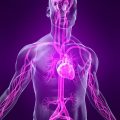Table of Contents
Postural Orthostatic Tachycardia Syndrome, or commonly known as POTS; is one of the many disorders with Orthostatic Intolerance (OI) as its primary symptom. It is a form of dysautonomia which affects the blood flow throughout the body. OI is characterized by decrease of blood volume to the heart; which is accompanied with excessive increase of heart rate (more than 120 bpm or an increase of 30 bpm for ten minutes); dizziness, fainting and/or lightheadedness, among others; when standing up for 10 minutes.
The ANS (autonomic nervous system) is responsible for regulating our bodily functions. Whenever we stand for example; our body needs to automatically adjust and accommodate various processes to allow our body to get in an upright position. When standing, significant amount of blood gets automatically sent down to the lower part of our body (legs); and autonomic reflexes makes sure that blood is appropriately re-distributed to the upper body through heart rate. As well as pumping responses, vessel tone; and muscle tone. Various conditions and diseases can affect/disrupt this system, and POTS is one of them. POTS however, is not a disease, rather; it’s a syndrome that may be caused by an underlying condition that affects the ANS.
Who Gets POTS?
Anyone can get POTS, but research says; almost 80% of POTS patients are women between the ages of 15 to 50 years old. Also, some reports show some women are at high risk of POTS episode before their menstrual periods. Also for women, POTS starts after giving birth, trauma, major surgery or viral infections. And because its main symptom is excessive increase of heart rate; POTS make it difficult for people to change their lifestyle, because standing alone can be difficult; let alone moving and being active.
What We Know About Adult POTS
Doctors are yet to pinpoint the exact cause of POTS; and why there’s a rapid and excessive increase of heart rate or why blood supply to the heart is reduced during episodes of OI. The general consensus among medical practitioners and researchers right now is that; there are a number of factors that affects/disrupts the normal mechanism of our body.
Some of the underlying medical conditions that leads to development or episodes of POTS are:
- Autoimmune diseases such as lupus; Sjogren’s syndrome, etc.
- Vitamin deficiency, especially Anemia
- Diabetes and pre-diabetes
- Multiple Sclerosis
- Toxicity caused by chemotherapy or heavy metal poisoning
- Pregnancy
- Surgery
- Trauma
- Etc.
What Treatments and Medications Are Available for POTS Patients?
Because POTS can be caused by various underlying medical conditions; it is usually treated by addressing the underlying condition. Also, because symptoms differ from one person to another; the treatment method differs from one case to another. To put it simply, there is no one-size-fits-all treatment for POTS. There are however, tons of ways to relieve the symptoms and treat the condition that causes it.
Doctors usually prescribe therapies to provide relief for the lowering of blood volume and regulating circulatory problems. Also, doctors recommend adding more salt to one’s diet; more fluid intake (16 oz of water; or around 2 full glass of water before getting up to help improve blood pressure); and of course, regular exercise.
For medications, doctors prescribe fludrocortisone for patients of high salt diet; while midodrine is given to those who need boost in blood volume and help in narrow blood vessels.






 I love to write medical education books. My books are written for everyone in an easy to read and understandable style.
I love to write medical education books. My books are written for everyone in an easy to read and understandable style.